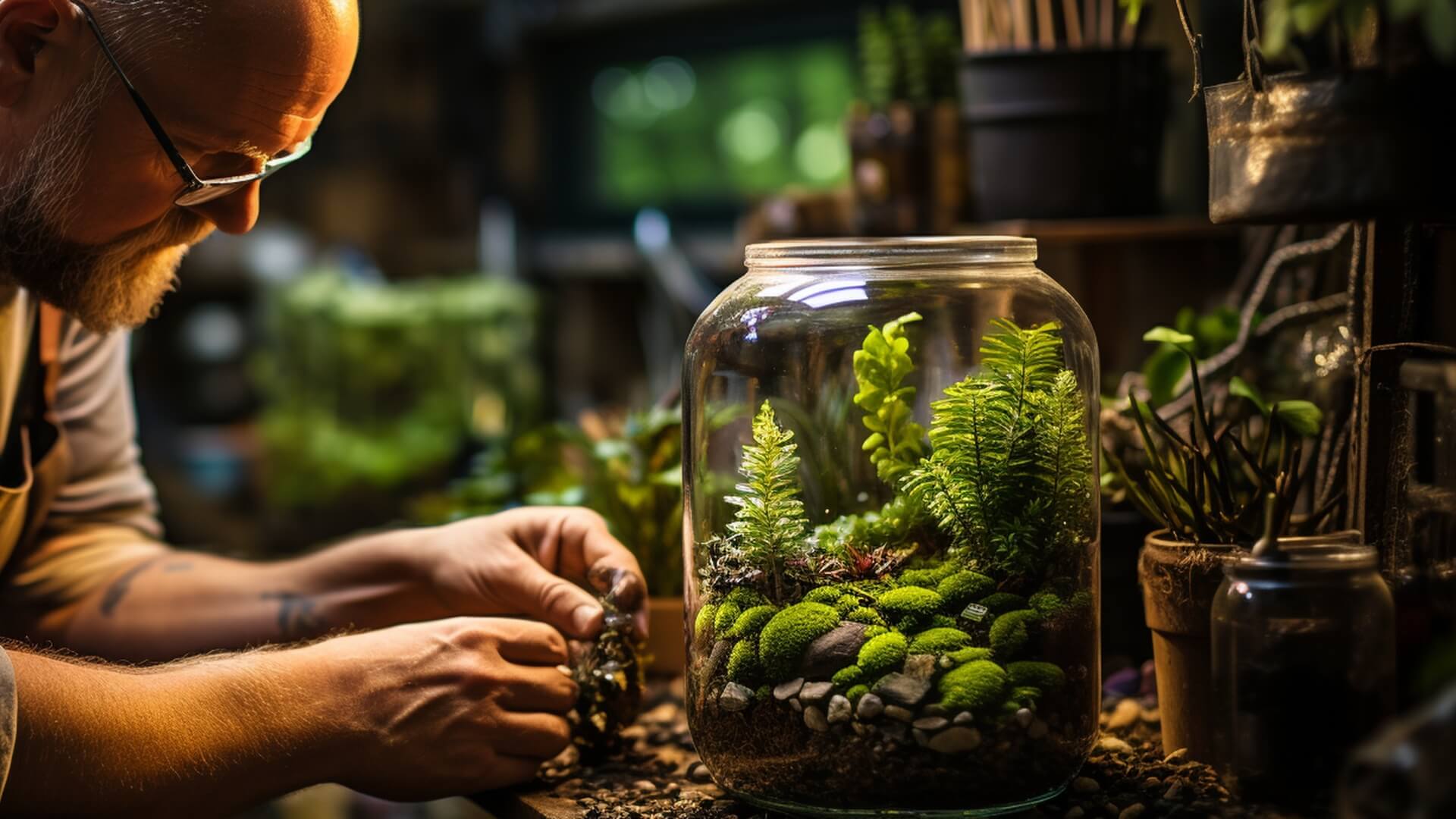In recent years, terrarium gardening has surged in popularity among both novice and seasoned gardeners. The allure of creating miniature ecosystems within glass containers has captivated many, offering a unique and low-maintenance way to bring greenery into indoor spaces. However, like any form of gardening, terrariums come with their own set of challenges and concerns. In this blog post, we'll explore some of the common issues that terrarium gardeners may encounter and provide tips on how to address them.
Overwatering or Underwatering:
One of the most prevalent concerns for terrarium gardeners is the delicate balance of watering, specifically the risk of overwatering or underwatering. This issue stems from the enclosed environment of terrariums, which can create a humid atmosphere that may trap excess moisture or conversely, lead to dry conditions.
Overwatering poses a significant threat to terrarium plants, as stagnant water can saturate the soil, depriving roots of necessary oxygen and encouraging the growth of root rot and fungal diseases. Symptoms of overwatering include yellowing or wilting leaves, mushy stems, and a foul odor emanating from the soil.
On the other hand, underwatering can result in parched plants with drooping foliage and stunted growth. The lack of moisture can cause stress to the plants and hinder their ability to thrive within the terrarium environment.
To address the challenge of overwatering, terrarium gardeners should adopt a cautious approach to watering and prioritize the use of a well-draining soil mix. It's crucial to water plants sparingly, allowing the soil to dry out slightly between waterings. A moisture meter or simply inserting a finger into the soil can help determine when watering is necessary. Additionally, employing a watering method such as misting or using a small watering can with a narrow spout can help control the amount of water applied, preventing excessive saturation of the soil.
To combat underwatering, terrarium gardeners should establish a regular watering schedule based on the specific needs of the plants and the moisture levels within the terrarium. It's essential to monitor the condition of the soil and plants closely, adjusting the watering frequency as needed to ensure adequate hydration.
By striking the right balance between overwatering and underwatering, terrarium gardeners can create optimal growing conditions for their plants, promoting lush growth and vibrant foliage within these captivating miniature ecosystems.
Excessive Humidity:
Excessive humidity poses a significant concern for terrarium gardeners, particularly in closed environments where moisture can easily build up. High humidity levels can lead to mold and mildew growth, compromising the health of plants and the overall aesthetic of the terrarium. To address this issue, proper ventilation is key. Regularly remove the lid or open the terrarium to allow fresh air to circulate and excess moisture to escape. Additionally, consider placing a small fan nearby to improve air circulation and reduce humidity levels. Another effective solution is to position the terrarium in a location with indirect sunlight, as excessive heat can exacerbate humidity. Finally, monitor the moisture content of the soil closely and adjust watering frequency accordingly to prevent waterlogged conditions. By implementing these measures, terrarium gardeners can maintain a healthy balance of humidity and create an optimal environment for their miniature ecosystems to thrive.
Plant Selection:
Choosing the right plants for your terrarium is crucial for its long-term success. Not all plants thrive in the high humidity and limited space of a terrarium. Select species that are well-suited to these conditions, such as ferns, mosses, succulents, and air plants. Research the specific care requirements of each plant and ensure they are compatible with the size and type of terrarium you have.
Pest Infestations:
Pest infestations can be a significant concern for terrarium gardeners, as common pests like aphids, mealybugs, and spider mites can quickly damage delicate plants. To address these issues effectively, proactive measures and swift action are key.
One solution is to regularly inspect your terrarium for signs of pests, such as yellowing leaves, webbing, or visible insects. If you detect an infestation, isolate affected plants immediately to prevent the pests from spreading to others.
For minor infestations, gently wiping affected leaves with a damp cloth or cotton swab can help remove pests. Alternatively, you can use natural pest control methods such as neem oil or insecticidal soap, which are safe for most terrarium plants and effectively eliminate pests on contact.
Additionally, promoting a healthy environment within the terrarium by maintaining proper humidity levels and avoiding overwatering can help deter pest infestations. By staying vigilant and implementing these strategies, you can effectively manage and prevent pest problems in your terrarium garden.
Soil Issues:
The type of soil used in a terrarium can greatly impact plant health. It's essential to use a well-draining soil mix specifically formulated for terrariums to prevent waterlogging and root rot. Avoid using garden soil, as it may contain pests, weed seeds, or excessive organic matter that can decompose and create foul odors in the enclosed environment.
Maintenance:
While terrariums are often touted as low-maintenance gardening solutions, they still require regular care to thrive. This includes pruning overgrown plants, removing dead or yellowing foliage, and occasionally replenishing the soil with fresh nutrients. Set aside time for routine maintenance to ensure that your terrarium remains healthy and vibrant.
In conclusion, while terrarium gardening offers a captivating way to bring nature indoors, it's essential to be aware of the common concerns and challenges associated with this hobby. By understanding how to address issues such as overwatering, humidity control, plant selection, pest infestations, soil issues, and maintenance, you can cultivate thriving terrariums that bring joy and beauty to your living or work space. With a little knowledge and care, you'll soon become a confident and successful terrarium gardener.




